- Home
- Stephen King
Dark Tower V, The
Dark Tower V, The Read online
Also by Stephen King
NOVELS
Carrie
’Salem’s Lot
The Shining
The Stand
The Dead Zone
Firestarter
Cujo
THE DARK TOWER I:
The Gunslinger
Christine
Pet Sematary
Cycle of the Werewolf
The Talisman (with Peter Straub)
It
The Eyes of the Dragon
Misery
The Tommyknockers
THE DARK TOWER II:
The Drawing of the Three
THE DARK TOWER III:
The Waste Lands
The Dark Half
Needful Things
Gerald’s Game
Dolores Claiborne
Insomnia
Rose Madder
Desperation
The Green Mile
THE DARK TOWER IV:
Wizard and Glass
Bag of Bones
The Girl Who Loved Tom Gordon
Dreamcatcher
Black House (with Peter Straub)
From a Buick 8
AS RICHARD BACHMAN
Rage
The Long Walk
Roadwork
The Running Man
Thinner
The Regulators
COLLECTIONS
Night Shift
Different Seasons
Skeleton Crew
Four Past Midnight
Nightmares and Dreamscapes
Hearts in Atlantis
Everything’s Eventual
SCREENPLAYS
Creepshow
Cat’s Eye
Silver Bullet
Maximum Overdrive
Pet Sematary
Golden Years
Sleepwalkers
The Stand
The Shining
Rose Red
Storm of the Century
NONFICTION
Danse Macabre
On Writing
Dark Tower–related in bold
THE DARK TOWER V: WOLVES OF THE CALLA
Copyright © 2003 by Stephen King
Illustrations © 2003 by Bernie Wrightson
Book design by Thomas Canty and Robert K. Wiener
All rights reserved under International and Pan-American Copyright Conventions.
This book is a work of fiction. Names, characters, places, and incidents either are products of the author’s imagination or are used fictitiously. Any resemblance to actual events or locales or persons, living or dead, is entirely coincidental.
Acknowledgments
“Someone Saved My Life Tonight” by Elton John and Bernie Taupin © 1975 Happenstance Limited and Rouge Booze, Inc.
All Rights in U.S. administered by WB Music Corp.
All Rights outside U.S. administered by Muziekuitgeverij Artemis B.V.
All Rights Reserved. Used by permission.
WARNER BROS. PUBLICATIONS U.S. INC., Miami, FL 33014
“The Wandering Boy” © Song/ATV Tunes LLC.
All rights administered by Sony/ATV Music Publishing, 8 Music Square West, Nashville, TN 37203. All rights reserved. Used by permission.
“The Magnificent Seven”
MGM Consumer Products, a division of Metro-Goldwyn-Mayer Home Entertainment LLC, a wholly owned subsidiary of Metro-Goldwyn-Mayer Studios Inc.
Used by permission.
Library of Congress Control Number: 2003104355
ISBN 0-7432-5510-0
FIRST TRADE EDITION
Distributed by Simon & Schuster, Inc.
SCRIBNER
1230 Avenue of the Americas
New York, NY 10020
DONALD M. GRANT, PUBLISHER, INC.
Post Office Box 187, Hampton Falls, NH 03844
www.grantbooks.com
Visit us on the World Wide Web:
http://www.SimonSays.com
This book is for Frank Muller,
who hears the voices in my head.
Contents
The Final Argument
Prologue
Roont
Part One
Todash
I: The Face on the Water
II: New York Groove
III: Mia
IV: Palaver
V: Overholser
VI: The Way of the Eld
VII: Todash
Part Two
Telling Tales
I: The Pavilion
II: Dry Twist
III: The Priest’s Tale (New York)
IV: The Priest’s Tale Continued (Highways in Hiding)
V: The Tale of Gray Dick
VI: Gran-Pere’s Tale
VII: Nocturne, Hunger
VIII: Took’s Store; The Unfound Door
IX: The Priest’s Tale Concluded (Unfound)
Part Three
The Wolves
I: Secrets
II: The Dogan, Part 1
III: The Dogan, Part 2
IV: The Pied Piper
V: The Meeting of the Folken
VI: Before the Storm
VII: The Wolves
Epilogue
The Door Way Cave
Author’s Note
Author’s Afterword
Illustrations
“Time to be Men.”
She Lifted It To Her Mouth.
“Gunslingers, To Me!”
“Do You See Him?”
Come-Come-Commala
Its Blade Gleams Brightly.
She Throws It Hard.
The Searchlight Goes on Again.
“Riza”
The Reclining Skeleton Grinned at Him
“You Stainless Steel Bastard.”
For Gilead and the Calla!”
The Final Argument
Wolves of the Calla is the fifth volume of a longer tale inspired by Robert Browning’s narrative poem “Childe Roland to the Dark Tower Came.” The sixth, Song of Susannah, will be published in 2004. The seventh and last, The Dark Tower, will be published later that same year.
The first volume, The Gunslinger, tells how Roland Deschain of Gilead pursues and at last catches Walter, the man in black—he who pretended friendship with Roland’s father but actually served the Crimson King in far-off End-World. Catching the half-human Walter is for Roland a step on the way to the Dark Tower, where he hopes the quickening destruction of Mid-World and the slow death of the Beams may be halted or even reversed. The subtitle of this novel is RESUMPTION.
The Dark Tower is Roland’s obsession, his grail, his only reason for living when we meet him. We learn of how Marten tried, when Roland was yet a boy, to see him sent west in disgrace, swept from the board of the great game. Roland, however, lays Marten’s plans at nines, mostly due to his choice of weapon in his manhood test.
Steven Deschain, Roland’s father, sends his son and two friends (Cuthbert Allgood and Alain Johns) to the seacoast barony of Mejis, mostly to place the boy beyond Walter’s reach. There Roland meets and falls in love with Susan Delgado, who has fallen afoul of a witch. Rhea of the Cöos is jealous of the girl’s beauty, and particularly dangerous because she has obtained one of the great glass balls known as the Bends o’ the Rainbow…or the Wizard’s Glasses. There are thirteen of these in all, the most powerful and dangerous being Black Thirteen. Roland and his friends have many adventures in Mejis, and although they escape with their lives (and the pink Bend o’ the Rainbow), Susan Delgado, the lovely girl at the window, is burned at the stake. This tale is told in the fourth
volume, Wizard and Glass. The subtitle of this novel is REGARD.
In the course of the tales of the Tower we discover that the gunslinger’s world is related to our own in fundamental and terrible ways. The first of these links is revealed when Jake, a boy from the New York of 1977, meets Roland at a desert way station long years after the death of Susan Delgado. There are doors between Roland’s world and our own, and one of them is death. Jake finds himself in this desert way station after being pushed into Forty-third Street and run over by a car. The car’s driver was a man named Enrico Balazar. The pusher was a criminal sociopath named Jack Mort, Walter’s representative on the New York level of the Dark Tower.
Before Jake and Roland reach Walter, Jake dies again…this time because the gunslinger, faced with an agonizing choice between this symbolic son and the Dark Tower, chooses the Tower. Jake’s last words before plunging into the abyss are “Go, then—there are other worlds than these.”
The final confrontation between Roland and Walter occurs near the Western Sea. In a long night of palaver, the man in black tells Roland’s future with a Tarot deck of strange device. Three cards—the Prisoner, the Lady of Shadows, and Death (“but not for you, gunslinger”)—are especially called to Roland’s attention.
The Drawing of the Three, subtitled RENEWAL, begins on the shore of the Western Sea not long after Roland awakens from his confrontation with Walter. The exhausted gunslinger is attacked by a horde of carnivorous “lobstrosities,” and before he can escape, he has lost two fingers of his right hand and has been seriously infected. Roland resumes his trek along the shore of the Western Sea, although he is sick and possibly dying.
On his walk he encounters three doors standing freely on the beach. These open into New York at three different whens. From 1987, Roland draws Eddie Dean, a prisoner of heroin. From 1964, he draws Odetta Susannah Holmes, a woman who lost her legs when a sociopath named Jack Mort pushed her in front of a subway train. She is the Lady of Shadows, with a violent “other” hidden in her brain. This hidden woman, the violent and crafty Detta Walker, is determined to kill both Roland and Eddie when the gunslinger draws her into Mid-World.
Roland thinks that perhaps he has drawn three in just Eddie and Odetta, since Odetta is really two personalities, yet when Odetta and Detta merge as one into Susannah (largely thanks to Eddie Dean’s love and courage), the gunslinger knows it’s not so. He knows something else, as well: he is being tormented by thoughts of Jake, the boy who spoke of other worlds at the time of his death.
The Waste Lands, subtitled REDEMPTION, begins with a paradox: to Roland, Jake seems both alive and dead. In the New York of the late 1970s, Jake Chambers is haunted by the same question: alive or dead? Which is he? After killing a gigantic bear named either Mir (so called by the old people who went in fear of it) or Shardik (by the Great Old Ones who built it), Roland, Eddie, and Susannah backtrack the beast and discover the Path of the Beam known as Shardik to Maturin, Bear to Turtle. There were once six of these Beams, running between the twelve portals which mark the edges of Mid-World. At the point where the Beams cross, at the center of Roland’s world (and all worlds), stands the Dark Tower, the nexus of all where and when.
By now Eddie and Susannah are no longer prisoners in Roland’s world. In love and well on the way to becoming gunslingers themselves, they are full participants in the quest and follow Roland, the last seppe-sai (death-seller), along the Path of Shardik, the Way of Maturin.
In a speaking ring not far from the Portal of the Bear, time is mended, paradox is ended, and the real third is drawn. Jake reenters Mid-World at the end of a perilous rite where all four—Jake, Eddie, Susannah, and Roland—remember the faces of their fathers and acquit themselves honorably. Not long after, the quartet becomes a quintet, when Jake befriends a billy-bumbler. Bumblers, which look like a combination of badger, raccoon, and dog, have a limited speaking ability. Jake names his new friend Oy.
The way of the pilgrims leads them toward the city of Lud, where the degenerate survivors of two old factions carry on an endless conflict. Before reaching the city, in the little town of River Crossing, they meet a few ancient survivors of the old days. They recognize Roland as a fellow survivor of those days before the world moved on, and honor him and his companions. The Old People also tell them of a monorail train which may still run from Lud and into the waste lands, along the Path of the Beam and toward the Dark Tower.
Jake is frightened by this news but not surprised; before being drawn from New York, he obtained two books from a bookstore owned by a man with the thought-provoking name of Calvin Tower. One is a book of riddles with the answers torn out. The other, Charlie the Choo-Choo, is a children’s story with dark echoes of Mid-World. For one thing, the word char means death in the High Speech Roland grew up speaking in Gilead.
Aunt Talitha, the matriarch of River Crossing, gives Roland a silver cross to wear, and the travelers go their course. While crossing the dilapidated bridge which spans the River Send, Jake is abducted by a dying (and very dangerous) outlaw named Gasher. Gasher takes his young prisoner underground to the Tick-Tock Man, the last leader of the faction known as the Grays.
While Roland and Oy go after Jake, Eddie and Susannah find the Cradle of Lud, where Blaine the Mono awakes. Blaine is the last aboveground tool of a vast computer system that lies beneath Lud, and Blaine has only one remaining interest: riddles. It promises to take the travelers to the monorail’s final stop…if they can pose it a riddle it cannot solve. Otherwise, Blaine says, their trip will end in death: charyou tree.
Roland rescues Jake, leaving the Tick-Tock Man for dead. Yet Andrew Quick is not dead. Half-blind, hideously wounded about the face, he is rescued by a man who calls himself Richard Fannin. Fannin, however, also identifies himself as the Ageless Stranger, a demon of whom Roland has been warned.
The pilgrims continue their journey from the dying city of Lud, this time by monorail. The fact that the actual mind running the mono exists in computers falling farther and farther behind them will make no difference one way or the other when the pink bullet jumps the decaying tracks somewhere along the Path of the Beam at a speed in excess of eight hundred miles an hour. Their one chance of survival is to pose Blaine a riddle which the computer cannot answer.
At the beginning of Wizard and Glass, Eddie does indeed pose such a riddle, destroying Blaine with a uniquely human weapon: illogic. The mono comes to a stop in a version of Topeka, Kansas, which has been emptied by a disease called “superflu.” As they recommence their journey along the Path of the Beam (now on an apocalyptic version of Interstate 70), they see disturbing signs. ALL HAIL THE CRIMSON KING, advises one. WATCH FOR THE WALKIN DUDE, advises another. And, as alert readers will know, the Walkin Dude has a name very similar to Richard Fannin.
After telling his friends the story of Susan Delgado, Roland and his friends come to a palace of green glass which has been constructed across I-70, a palace that bears a strong resemblance to the one Dorothy Gale sought in The Wizard of Oz. In the throne-room of this great castle they encounter not Oz the Great and Terrible but the Tick-Tock Man, the great city of Lud’s final refugee. With Tick-Tock dead, the real Wizard steps forward. It’s Roland’s ancient nemesis, Marten Broadcloak, known in some worlds as Randall Flagg, in others as Richard Fannin, in others as John Farson (the Good Man). Roland and his friends are unable to kill this apparition, who warns them one final time to give up their quest for the Tower (“Only misfires against me, Roland, old fellow,” he tells the gunslinger), but they are able to banish him.
After a final trip into the Wizard’s Glass and a final dreadful revelation—that Roland of Gilead killed his own mother, mistaking her for the witch named Rhea—the wanderers find themselves once more in Mid-World and once more on the Path of the Beam. They take up their quest again, and it is here that we will find them in the first pages of Wolves of the Calla.
This argument in no way summarizes the first four books of the Tower cycle; if y
ou have not read those books before commencing this one, I urge you to do so or to put this one aside. These books are but parts of a single long tale, and you would do better to read them from beginning to end rather than starting in the middle.
“Mister, we deal in lead.”
—Steve McQueen,
in The Magnificent Seven
“First comes smiles, then lies. Last is gunfire.”
—Roland Deschain, of Gilead
The blood that flows through you
flows through me,
when I look in any mirror,
it’s your face that I see.
Take my hand,
lean on me,
We’re almost free,
Wandering boy.
—Rodney Crowell
Prologue:
Roont
One
Tian was blessed (though few farmers would have used such a word) with three patches: River Field, where his family had grown rice since time out of mind; Roadside Field, where kaJaffords had grown sharproot, pumpkin, and corn for those same long years and generations; and Son of a Bitch, a thankless tract which mostly grew rocks, blisters, and busted hopes. Tian wasn’t the first Jaffords determined to make something of the twenty acres behind the home place; his Gran-pere, perfectly sane in most other respects, had been convinced there was gold there. Tian’s Ma had been equally positive it would grow porin, a spice of great worth. Tian’s particular insanity was madrigal. Of course madrigal would grow in Son of a Bitch. Must grow there. He’d gotten hold of a thousand seeds (and a dear penny they had cost him) that were now hidden beneath the floorboards of his bedroom. All that remained before planting next year was to break ground in Son of a Bitch. This chore was easier spoken of than accomplished.
Clan Jaffords was blessed with livestock, including three mules, but a man would be mad to try using a mule out in Son of a Bitch; the beast unlucky enough to draw such duty would likely be lying legbroke or stung to death by noon of the first day. One of Tian’s uncles had almost met this latter fate some years before. He had come running back to the home place, screaming at the top of his lungs and pursued by huge mutie wasps with stingers the size of nails.
They had found the nest (well, Andy had found it; Andy wasn’t bothered by wasps no matter how big they were) and burned it with kerosene, but there might be others. And there were holes. Yer-bugger, plenty o’them, and you couldn’t burn holes, could you? No. Son of a Bitch sat on what the old folks called “loose ground.” It was consequently possessed of almost as many holes as rocks, not to mention at least one cave that puffed out draughts of nasty, decay-smelling air. Who knew what boggarts and speakies might lurk down its dark throat?

 The Stand
The Stand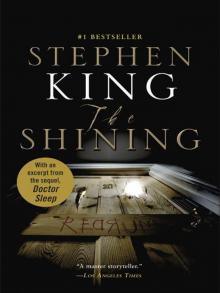 The Shining
The Shining It
It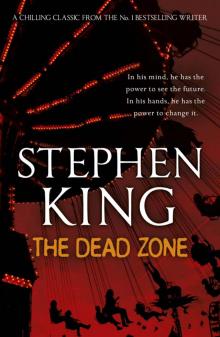 The Dead Zone
The Dead Zone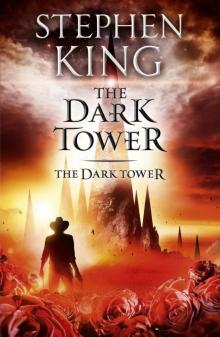 The Dark Tower
The Dark Tower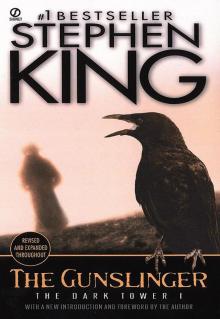 The Gunslinger
The Gunslinger Song of Susannah
Song of Susannah Under the Dome
Under the Dome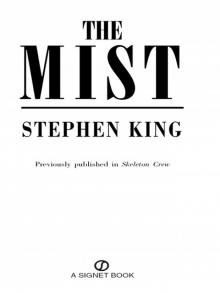 The Mist
The Mist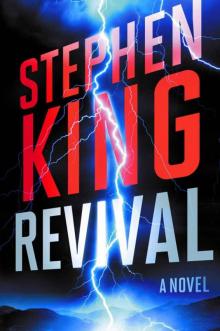 Revival
Revival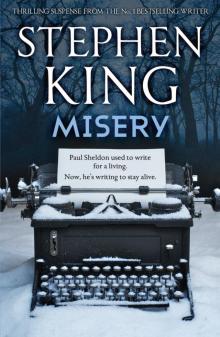 Misery
Misery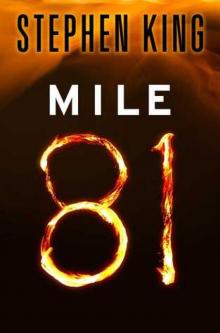 Mile 81
Mile 81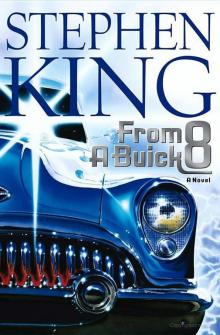 From a Buick 8
From a Buick 8 Just After Sunset
Just After Sunset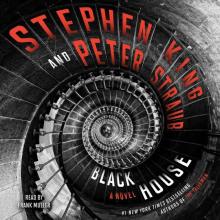 Black House
Black House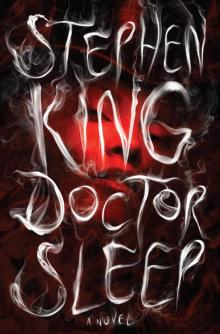 Doctor Sleep
Doctor Sleep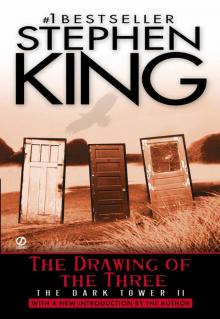 The Drawing of the Three
The Drawing of the Three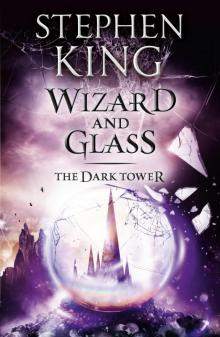 Wizard and Glass
Wizard and Glass Dolores Claiborne
Dolores Claiborne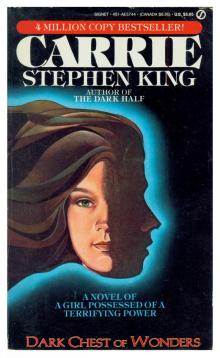 Carrie
Carrie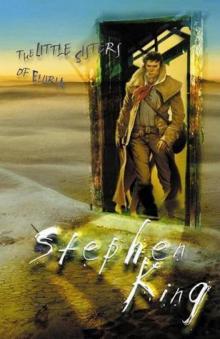 The Little Sisters of Eluria
The Little Sisters of Eluria The Waste Lands
The Waste Lands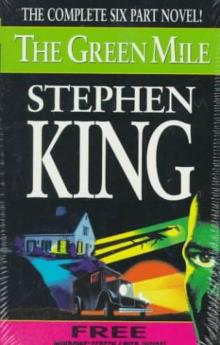 The Green Mile
The Green Mile The Girl Who Loved Tom Gordon
The Girl Who Loved Tom Gordon Cujo
Cujo The Outsider_A Novel
The Outsider_A Novel The Tommyknockers
The Tommyknockers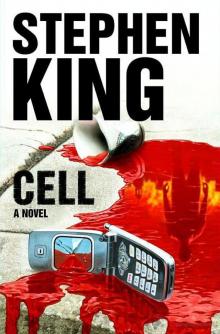 Cell
Cell Pet Sematary
Pet Sematary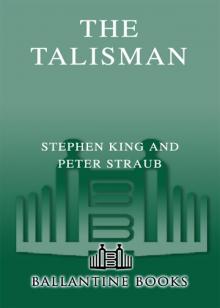 The Talisman
The Talisman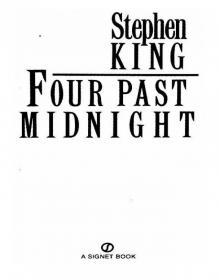 Four Past Midnight
Four Past Midnight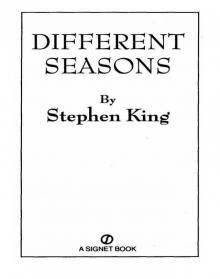 Different Seasons
Different Seasons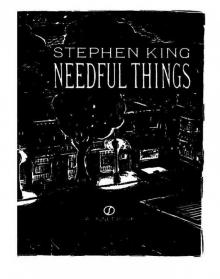 Needful Things
Needful Things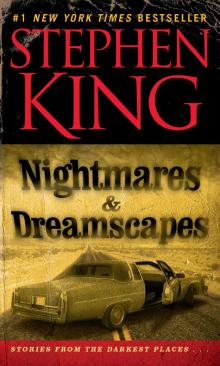 Nightmares and Dreamscapes
Nightmares and Dreamscapes Christine
Christine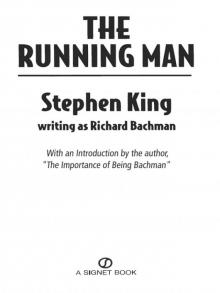 The Running Man
The Running Man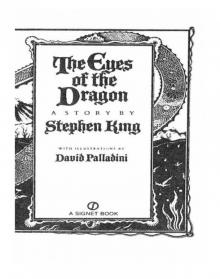 The Eyes of the Dragon
The Eyes of the Dragon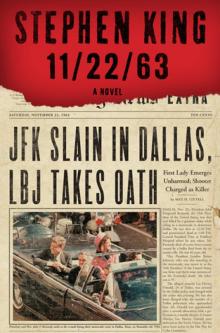 11/22/63
11/22/63 Firestarter
Firestarter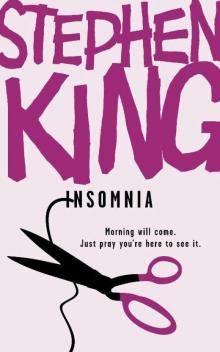 Insomnia
Insomnia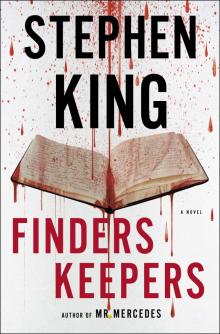 Finders Keepers
Finders Keepers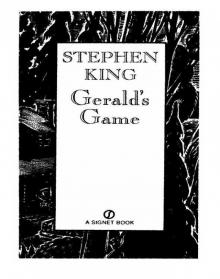 Gerald's Game
Gerald's Game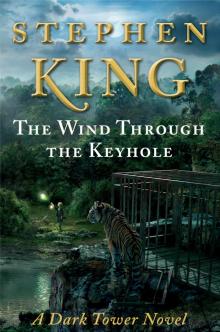 The Wind Through the Keyhole
The Wind Through the Keyhole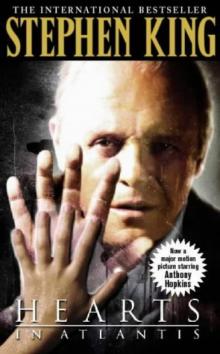 Hearts in Atlantis
Hearts in Atlantis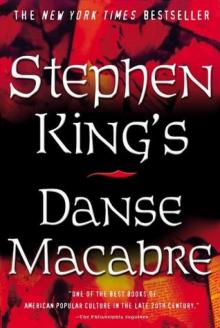 Danse Macabre
Danse Macabre Thinner
Thinner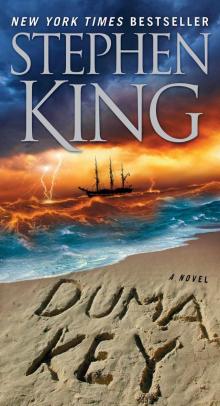 Duma Key
Duma Key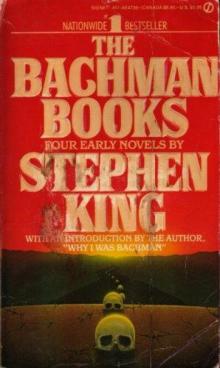 The Bachman Books
The Bachman Books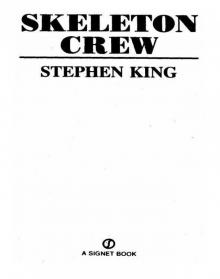 Skeleton Crew
Skeleton Crew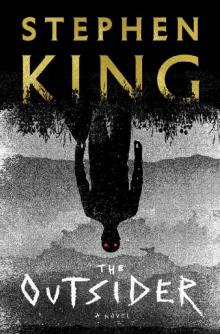 The Outsider-Stephen King
The Outsider-Stephen King Full Dark, No Stars
Full Dark, No Stars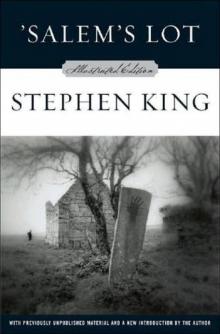 Salem's Lot
Salem's Lot Bag of Bones
Bag of Bones Desperation
Desperation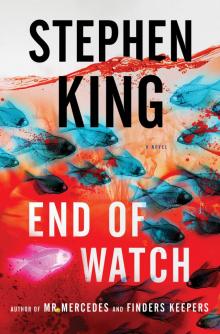 End of Watch
End of Watch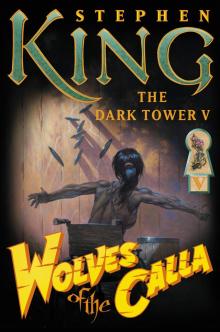 Wolves of the Calla
Wolves of the Calla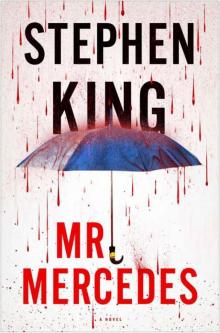 Mr. Mercedes
Mr. Mercedes Billy Summers
Billy Summers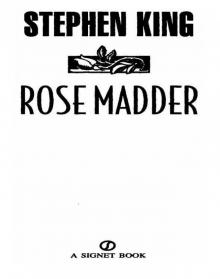 Rose Madder
Rose Madder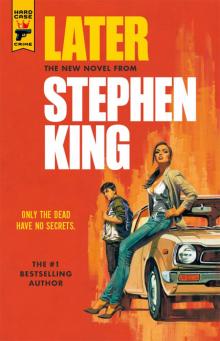 Later
Later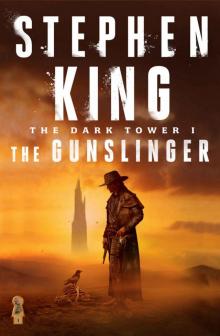 Gunslinger
Gunslinger The Langoliers
The Langoliers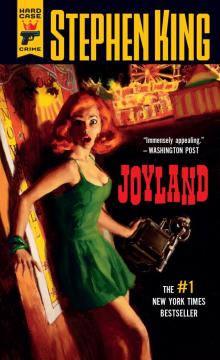 Joyland
Joyland If It Bleeds
If It Bleeds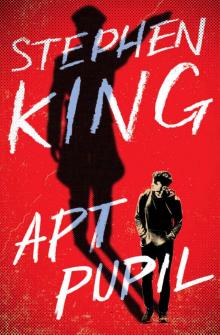 Apt Pupil (Scribner Edition)
Apt Pupil (Scribner Edition) Flight or Fright
Flight or Fright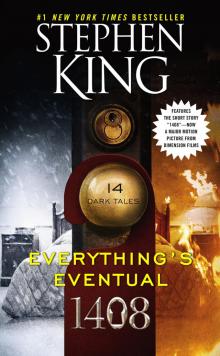 Everything's Eventual: 14 Dark Tales
Everything's Eventual: 14 Dark Tales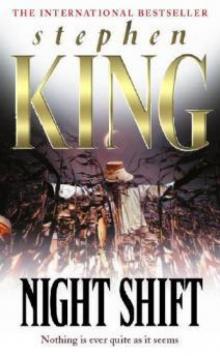 Night Shift
Night Shift The Dark Half
The Dark Half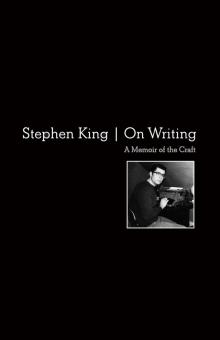 On Writing
On Writing The Institute
The Institute A Death
A Death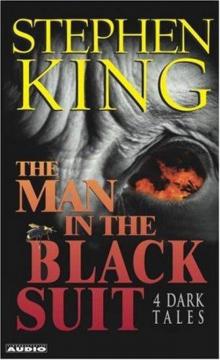 The Man in the Black Suit : 4 Dark Tales
The Man in the Black Suit : 4 Dark Tales Bullet
Bullet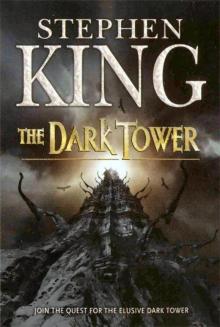 The Dark Tower tdt-7
The Dark Tower tdt-7 Chiral Mad 3
Chiral Mad 3 Big Driver
Big Driver Stephen King: The Green Mile
Stephen King: The Green Mile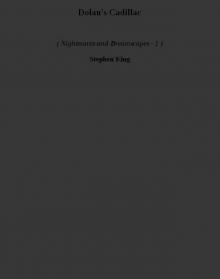 Dolan's Cadillac nad-1
Dolan's Cadillac nad-1 Head Down nad-22
Head Down nad-22 The Doctor's Case
The Doctor's Case Luckey Quarter
Luckey Quarter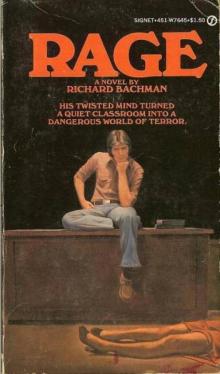 Rage (richard bachman)
Rage (richard bachman) Black House js-2
Black House js-2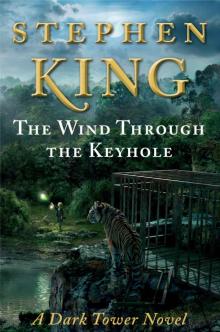 The Wind Through the Keyhole (Dark Tower)
The Wind Through the Keyhole (Dark Tower)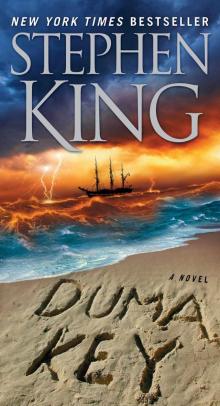 Duma Key: A Novel
Duma Key: A Novel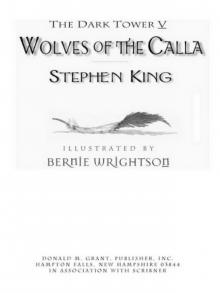 Dark Tower V, The
Dark Tower V, The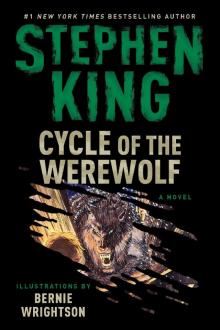 Cycle of the Werewolf
Cycle of the Werewolf AUTOPSY ROOM FOUR
AUTOPSY ROOM FOUR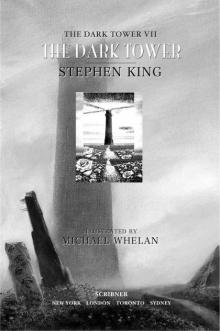 Dark Tower VII, The (v. 7)
Dark Tower VII, The (v. 7) Gramma
Gramma Suffer the Little Children
Suffer the Little Children Chinga
Chinga Word Processor of the Gods
Word Processor of the Gods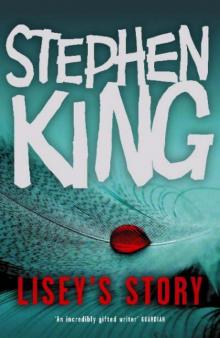 Lisey’sStory
Lisey’sStory Dark Tower V (Prologue)
Dark Tower V (Prologue)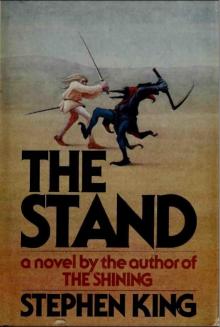 The Stand (Original Edition)
The Stand (Original Edition) Rainy Season nad-13
Rainy Season nad-13 Transgressions
Transgressions The Plant
The Plant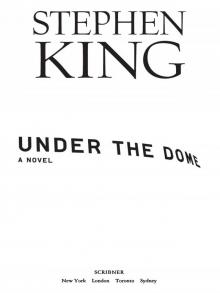 Under the Dome: A Novel
Under the Dome: A Novel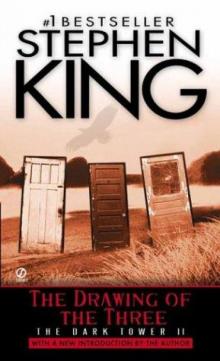 The Dark Tower II: The Drawing of the Three
The Dark Tower II: The Drawing of the Three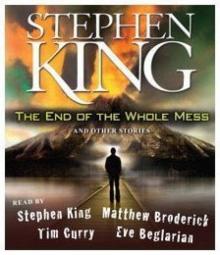 The End of the Whole Mess:
The End of the Whole Mess: Ur
Ur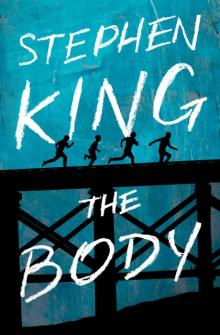 The Body
The Body Uncollected Stories 2003
Uncollected Stories 2003 Chattery Teeth
Chattery Teeth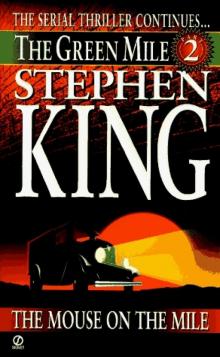 The Mouse on the Mile
The Mouse on the Mile The Cat from Hell
The Cat from Hell![The Drawing of the Three [The Dark Tower II] Read online](http://i1.bookreadfree.com/i/03/25/the_drawing_of_the_three_the_dark_tower_ii_preview.jpg) The Drawing of the Three [The Dark Tower II]
The Drawing of the Three [The Dark Tower II] Cell: A Novel
Cell: A Novel Uncle Otto's Truck
Uncle Otto's Truck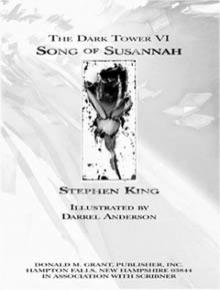 Song of Susannah dt-6
Song of Susannah dt-6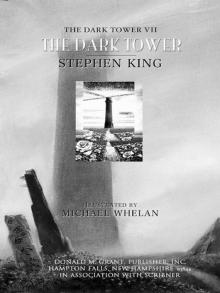 The Dark Tower VII
The Dark Tower VII Head Down
Head Down Sneakers
Sneakers Crouch End
Crouch End Outsider
Outsider End of Watch: A Novel (The Bill Hodges Trilogy Book 3)
End of Watch: A Novel (The Bill Hodges Trilogy Book 3) Revival: A Novel
Revival: A Novel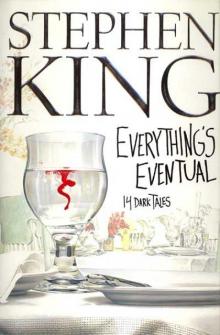 Everything's Eventual skssc-4
Everything's Eventual skssc-4 The Colorado Kid
The Colorado Kid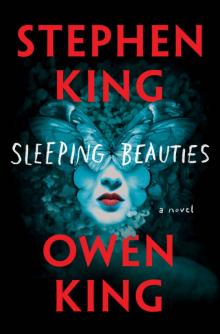 Sleeping Beauties: A Novel
Sleeping Beauties: A Novel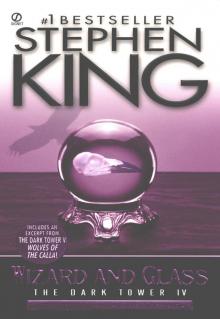 The Dark Tower IV Wizard and Glass
The Dark Tower IV Wizard and Glass A Book of Horrors
A Book of Horrors Four Past Midnight - 3 - Secret Window, Secret Garden
Four Past Midnight - 3 - Secret Window, Secret Garden The House on Maple Street
The House on Maple Street Sometimes They Come Back
Sometimes They Come Back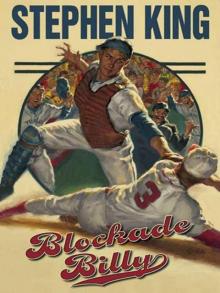 Blockade Billy
Blockade Billy Crouch End nad-17
Crouch End nad-17 Lunch at the Gotham Cafe
Lunch at the Gotham Cafe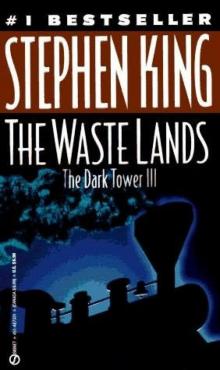 The Waste Lands dt-3
The Waste Lands dt-3 Six Stories
Six Stories A Face in the Crowd
A Face in the Crowd Case
Case Four Past Midnight - 2 - The Langoliers
Four Past Midnight - 2 - The Langoliers Umney's last case nad-21
Umney's last case nad-21 Survivor Type
Survivor Type Guns (Kindle Single)
Guns (Kindle Single) You Know They Got a Hell of a Band
You Know They Got a Hell of a Band The Jaunt
The Jaunt In A Half World Of Terror
In A Half World Of Terror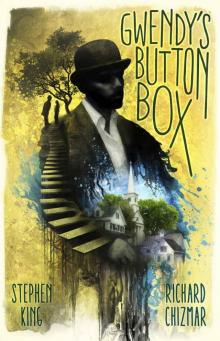 Gwendy's Button Box
Gwendy's Button Box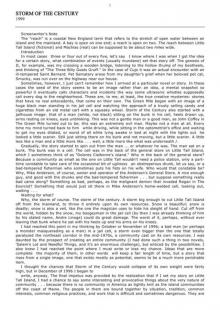 Storm of the Century
Storm of the Century The Jaunt. Travel
The Jaunt. Travel Roadwork
Roadwork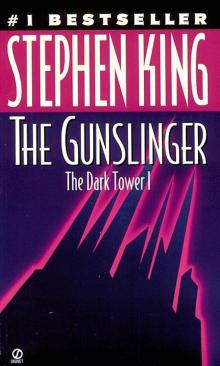 Darktower 1 - The Gunslinger
Darktower 1 - The Gunslinger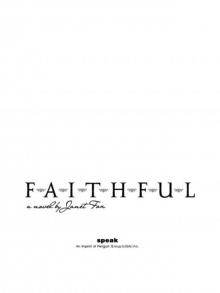 Faithful
Faithful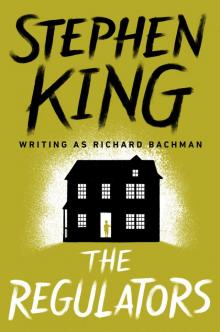 The Regulators
The Regulators A Bedroom in the Wee Hours of the Morning
A Bedroom in the Wee Hours of the Morning Graveyard Shift
Graveyard Shift The Monkey
The Monkey Children of the Corn
Children of the Corn The Reploids
The Reploids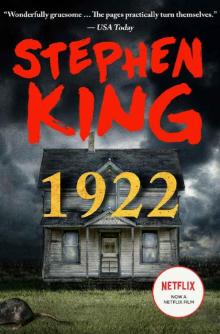 1922
1922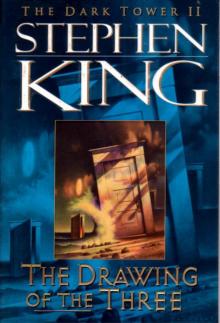 Darktower 2 - The Drawing of the Three
Darktower 2 - The Drawing of the Three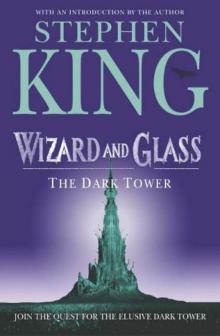 Wizard and Glass dt-4
Wizard and Glass dt-4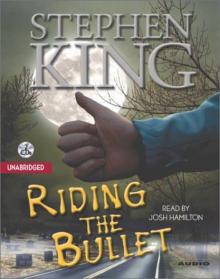 Riding The Bullet
Riding The Bullet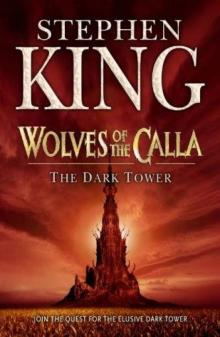 Wolves of the Calla dt-5
Wolves of the Calla dt-5 L.T.'S Theory Of Pets
L.T.'S Theory Of Pets The Langoliers fpm-1
The Langoliers fpm-1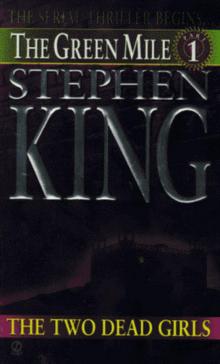 The Two Dead Girls
The Two Dead Girls The Blue Air Compressor
The Blue Air Compressor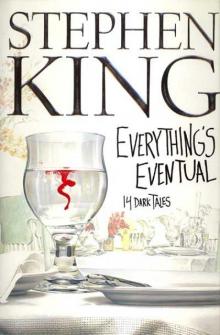 Everything's Eventual
Everything's Eventual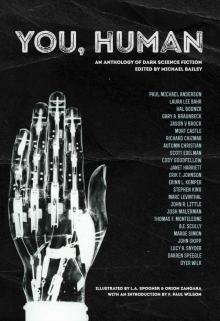 You, Human: An Anthology of Dark Science Fiction
You, Human: An Anthology of Dark Science Fiction The Night of The Tiger
The Night of The Tiger The Regulators (richard bachman)
The Regulators (richard bachman) Elevation
Elevation The Road Virus Heads North
The Road Virus Heads North Good Marriage
Good Marriage Four Past Midnight - 5 - The Library Policeman
Four Past Midnight - 5 - The Library Policeman Grey Matter
Grey Matter Herman Wouk Is Still Alive
Herman Wouk Is Still Alive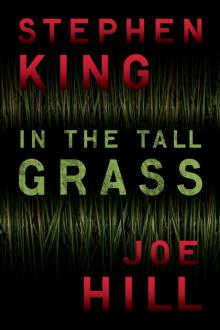 In the Tall Grass
In the Tall Grass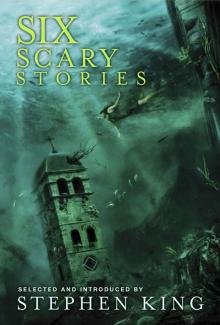 Six Scary Stories
Six Scary Stories Foreward
Foreward The Crate
The Crate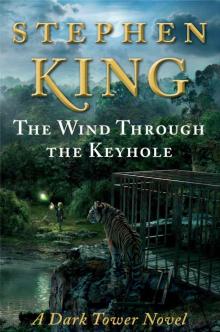 The wind through the keyhole adt-8
The wind through the keyhole adt-8 King, Stephen - Battleground
King, Stephen - Battleground The Wedding Gig
The Wedding Gig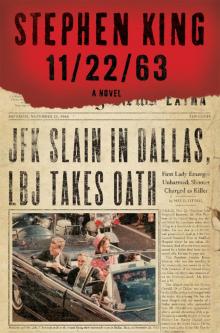 11/22/63: A Novel
11/22/63: A Novel The Long Walk
The Long Walk